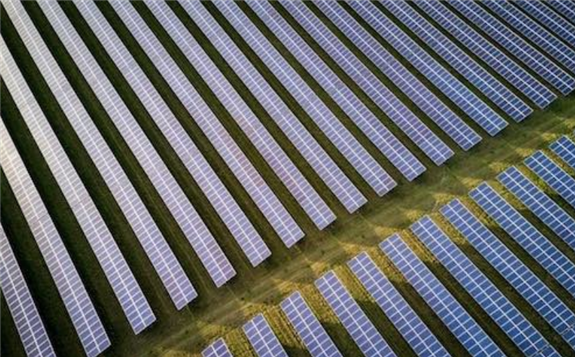
The report, published on Thursday by Greenpeace Australia Pacific, profiles the renewable energy activities and commitments of 80 big-brand companies across seven major sectors of the Australian economy.
The companies are compared across three key areas: commitment to power their operations with 100 per cent renewable electricity by 2030; participation in a corporate power purchase agreement; and investment in on-site solar.
The results found that of the 80 companies profiled, 24 of them (30%) had committed to move to 100% renewable energy.
These included eight “early adopters” of the global RE100 leadership initiative, which was formally launched in Australia in late 2018: the Commonwealth Bank, Bank Australia, ANZ, NAB, Westpac, Macquarie Bank, QBE and Atlassian.
Another 21 companies (26%) were found by Greenpeace to have signed a corporate power purchase agreement, through which they have committed to buy some or all of the output of a wind or solar farm – existing or new – for a set period of time. These included ASX-listed companies Bluescope Steel, Liberty One Steel and packaging giant Orora.
A further 52 companies (65%) had themselves invested in the installation of rooftop or onsite solar PV, to reduce their consumption of grid power.
But the report finds plenty of potential for Australian businesses to up their game on renewables, and plenty of compelling reasons to aim for 100 per cent.
High among those reasons are the ever-improving economics of renewables. The report cites estimates from energy consultancy Energetics claiming companies can save between 15-47 per cent of their energy costs sourcing solar or wind energy via a corporate power purchase agreement.
“Companies are making the switch to renewable energy because it’s cheaper, cleaner and better for business,” said Greenpeace Australia Pacific senior campaigner Lindsay Soutar.
A further 52 companies (65%) had themselves invested in the installation of rooftop or onsite solar PV, to reduce their consumption of grid power.
But the report finds plenty of potential for Australian businesses to up their game on renewables, and plenty of compelling reasons to aim for 100 per cent.
High among those reasons are the ever-improving economics of renewables. The report cites estimates from energy consultancy Energetics claiming companies can save between 15-47 per cent of their energy costs sourcing solar or wind energy via a corporate power purchase agreement.
“Companies are making the switch to renewable energy because it’s cheaper, cleaner and better for business,” said Greenpeace Australia Pacific senior campaigner Lindsay Soutar.
“Over 210 companies globally have made 100% renewable commitments, with household names in Australia including Carlton & United Breweries, Mars, IKEA, Google, L’Oreal and the big four banks all doing the same.”
The report, called Re-energising Australian Business, projects that if Woolworths, Coles and Telstra alone moved to 100 per cent renewable energy, this would create more than 4,000 construction job-years, 232 ongoing jobs, and cut carbon pollution by almost 5 million tonnes
And if Australia’s largest 13 retail companies made the transition to 100% renewables, it would create demand sufficient to build 2.4GW of new solar and wind, the report says.
If all 80 of the companies surveyed made the switch to renewables, it would result in 5GW of new wind and solar capacity (82 projects), 10,329 construction job-years, more than 500 ongoing jobs and more than enough electricity to replace the Yallourn coal power station.
And finally, if the top 100 corporate electricity consumers in Australia all switched to 100 per cent renewables, it would amount to 24.5GW of solar and wind or 350 new renewable energy projects.
“Every year, business and industry use approximately 70% of Australia’s electricity which is still powered by polluting coal,” Soutar added.
“As some of Australia’s biggest electricity users, companies can go from being a big part of the problem to a big part of the solution.”